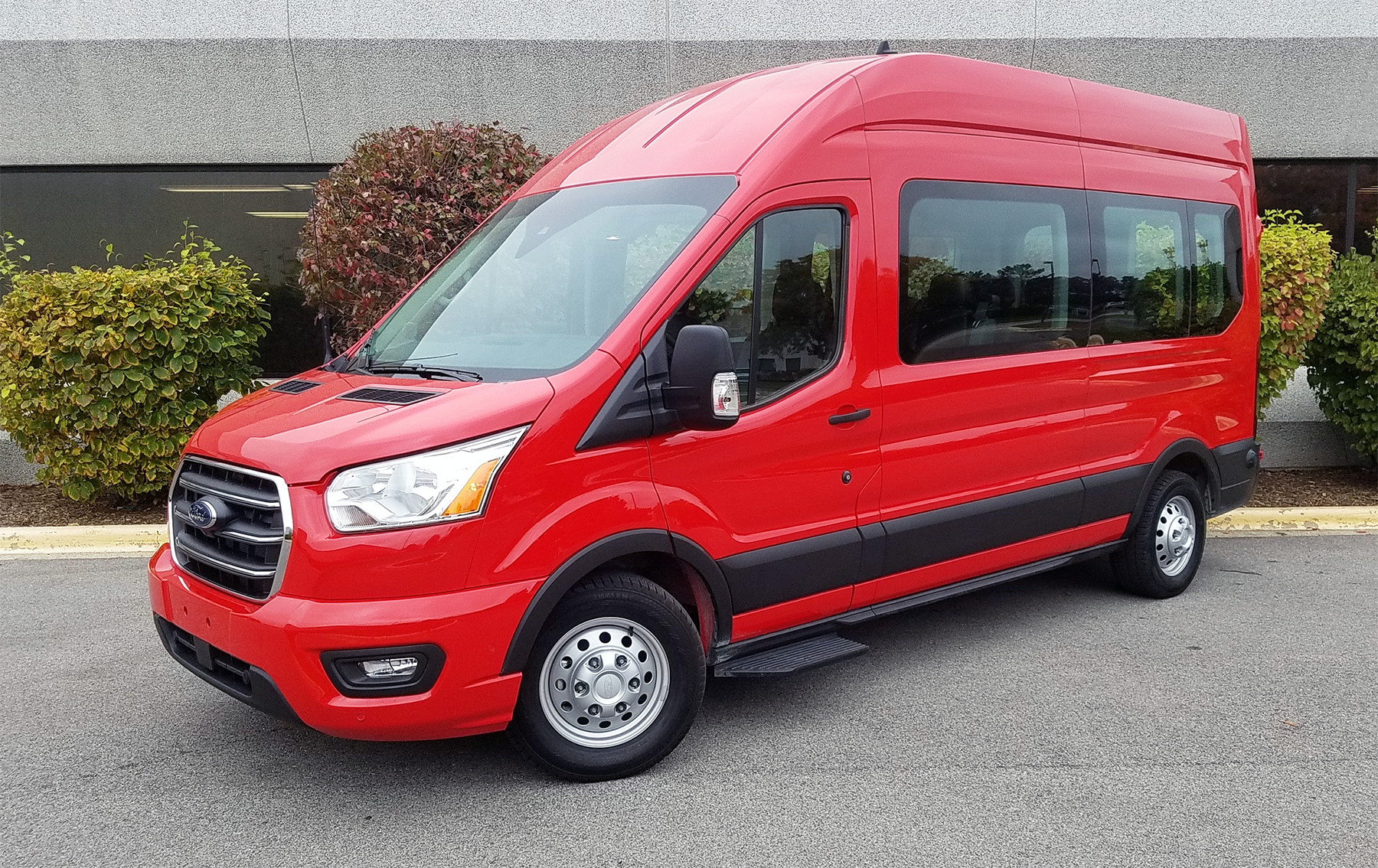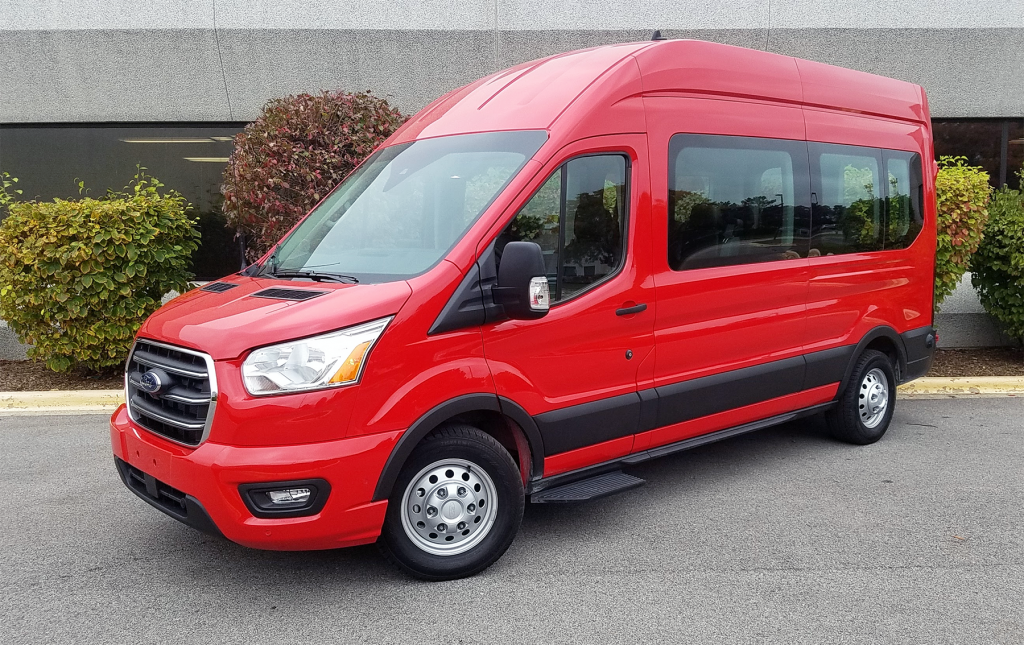
Class: Commercial Vehicle
Miles driven: 161
Fuel used: 10.2 gallons
Real-world fuel economy: 15.8 mpg
| CG Report Card | |
|---|---|
| Room and Comfort | A |
| Power and Performance | B- |
| Fit and Finish | C+ |
| Fuel Economy | B- |
| Value | B |
| Report-card grades are derived from a consensus of test-driver evaluations. All grades are versus other vehicles in the same class. Value grade is for specific trim level evaluated, and may not reflect Consumer Guide's impressions of the entire model lineup. | |
| Big & Tall Comfort | |
| Big Guy | A |
| Tall Guy | A- |
| Big & Tall comfort ratings are for front seats only. "Big" rating based on male tester weighing approximately 350 pounds, "Tall" rating based on 6'6"-tall male tester. | |
| Drivetrain | |
| Engine Specs | 310-hp 3.5L |
| Engine Type | Turbo V6 |
| Transmission | 10-speed automatic |
| Drive Wheels | All-wheel drive |
Driving mix: 55% city, 45% highway
EPA-estimated fuel economy: NA
Fuel type: Regular gas
Base price: $50,515 (not including $1695 destination charge)
Options on test vehicle: 3.5-liter EcoBoost V6 ($1495), 10-way power driver/passenger seats in Ebony leather ($1615), Sync3 infotainment system with 8-inch screen and navigation ($810), adaptive cruise control ($455), front/rear split-view camera ($510), extended-length running boards ($655), 110-volt power outlet ($100), enhanced active park assist ($550)
Price as tested: $58,400
Quick Hits
The great: Passenger-hauling capacity; huge interior space; extra-easy entry and exit
The good: Good level of comfort/convenience features and all-around refinement for a commercial vehicle
The not so good: Plus-size dimensions make close-quarters maneuvering a challenge; some rattling and body-drumming noises when traveling over bumps and rough pavement
John Biel
There’s something strange about commuting in a Ford Transit van—stranger even than using a 12-seat vehicle that’s almost 20 feet long astride a limousine-like wheelbase to convey a single human, his computer bag, and a lunch from driveway to office. What’s odd is you look into the rearview mirror, see all those empty seats stretching out into what seems like eternity . . . and feel kind of lonely.
I’ve made the office-home run in big stuff like one-ton, crew-cab, long-bed pickups, but even they feel intimate by comparison. There, you’re cozily isolated in an enclosure that ends at a second row of roomy seating, kind of like an executive-class sedan. This—the long-wheelbase Transit—is something completely different.
Customized in Commodity Times: Conversion Vans You Can Still Buy
Consumer Guide logged some time with a Transit 350 XLT (the “plush” one). It was a long-length high-roof model—low- and medium-height bodies are available too—with the newly offered torque-apportioning all-wheel drive, and it had a starting price, with delivery, of $52,210. With options, including the EcoBoost V6 engine, the Race Red test van came in at $58,400.
This mobile cavern can be ordered to seat two, eight, 12, 14, or 15 passengers in the 147.6-inch-wheelbase long-length package, 12 being standard. The second row consists of three conjoined seats at the left of the vehicle, clear of the side-door entry well; the third row features two seats to the left, a wide pass-through, and one seat at the far right; and the fourth row is four seats wide.
Everything about it is, well, ample. Glass area is huge, especially ahead and directly right and left (though divided panel-truck-style rear doors interrupt the straight-back view somewhat). In the 109.6-inch-tall high-roof, there’s 56.6 inches of headroom in the front row and 65.2 inches the rest of the way back. Adults—even tall ones—can stand erect inside. The sliding door on the right side of the vehicle is a gaping 63 inches wide, making entry and exit quite easy. (New for the year is a power sliding-door option but CG’s test truck did not have it.) Cargo capacity aft of the last row of seats in the version tested is listed in a range of 85.8 to 107 cubic feet—a lot by any measure.
The XLT faces the world with a chrome-trimmed grille and body-color front bumper with integrated fog lights that immediately distinguish it from the entry-level XL. Other exterior standards are automatic headlamps and rain-sensing windshield wipers. XLTs with the standard-rating front axle have silver vented wheel covers on 16-inch steel wheels, but the those with the heavy-duty axle that was on the test vehicle get silver-painted steel wheels with exposed lugs.
Mass-Transit Madness! A Gallery of Classic Bus Ads
XLT comfort and convenience features include air conditioning, A- and B-pillar-mounted assist handles, cruise control (upgraded on the tester to adaptive cruise), a 12-volt power point in front, tilt/telescoping steering wheel, Wi-Fi hotspot, rearview camera with trailer-hitch assist, USB ports, and easy-to-use Sync3 infotainment system. Built-in safety and driver-assistance technologies are blind-spot and rear cross-traffic alerts, lane-keeping assist, and new pre-collision assist with automatic emergency braking. The van that CG sampled was further ennobled with extra-cost items like navigation, enhanced active parking assist, leather upholstery, and 10-way power adjusters for the front seats.
Forgotten People-Movers: More than 30 Minivans You Don’t Remember
Front-row passengers enjoy comfortable and supportive seats with inboard flipper armrests, to say nothing of generous legroom and a commanding view of the road. There’s good legroom in each subsequent row, and the inboard sides of seats in the second and third rows had flipper armrests, too. Back-row seats are at a fixed angle, but the test vehicle’s second- and third-row seats had some back recline. However, they don’t fold flat.
Looking past the optional leather (gray cloth is standard), the interior mood is fairly utilitarian, with hard plastic on the dash and doors. Big overhead shelves at the front provide places in which driver and front passenger can stash stuff. There’s a large glove box, but it opens at a point about where a front passenger’s knees might be expected to be. The dash sprouts a central extension with cup holders and open trays, and there are big cup holders at both ends of the dash and exposed angled bins at each end, too. Additional passengers aren’t as well served. Upper and lower pouches are affixed to the backs of both front seats and some cup holders are molded into the side panels, so self-reliance will be required of those traveling in the “coach” section.
Transit’s new standard engine is a naturally aspirated 3.5-liter V6 of 275 horsepower and a 262 lb-ft of torque, but $1495 buys the 3.5-liter EcoBoost V6 with twin turbochargers. It pumps out 310 ponies and lots more (and more-quickly attained) torque—400 lb-ft of it. Either engine comes with a 10-speed automatic transmission. Power delivery from the EcoBoost, autobox, and standard 3.73:1 limited-slip axle is good, and with a little patience you’ll see it take the Transit to safe expressway speeds. (The long-length 350 high-roof has a maximum towing capacity of 4500 pounds.) There are no EPA ratings required for vehicles of this type, but when this reviewer drove it for 62.5 miles, with 40 percent in city-type operation, he recorded 16.0 mpg.
There is a firm, “trucky” quality to the ride, but the Transit 350 doesn’t really crash or jolt on bumps. Some on-road rattling and body drumming sounds off over pavement irregularities. The 235.5-inch-long van steers slowly but easily. Braking is secure and fairly prompt—though we can’t ever imagine wanting to panic-stop this thing.
If you’ve got a really big family or enjoy some large-scale hobby or recreation, perhaps you can imagine occasions on which you might fill a Transit. The rest of the time, though, it may just be you and your existential angst making the trip.
(Click below for enlarged images)
Listen to the very entertaining Consumer Guide Car Stuff Podcast
2020 Ford Transit Gallery

2020 Ford Transit